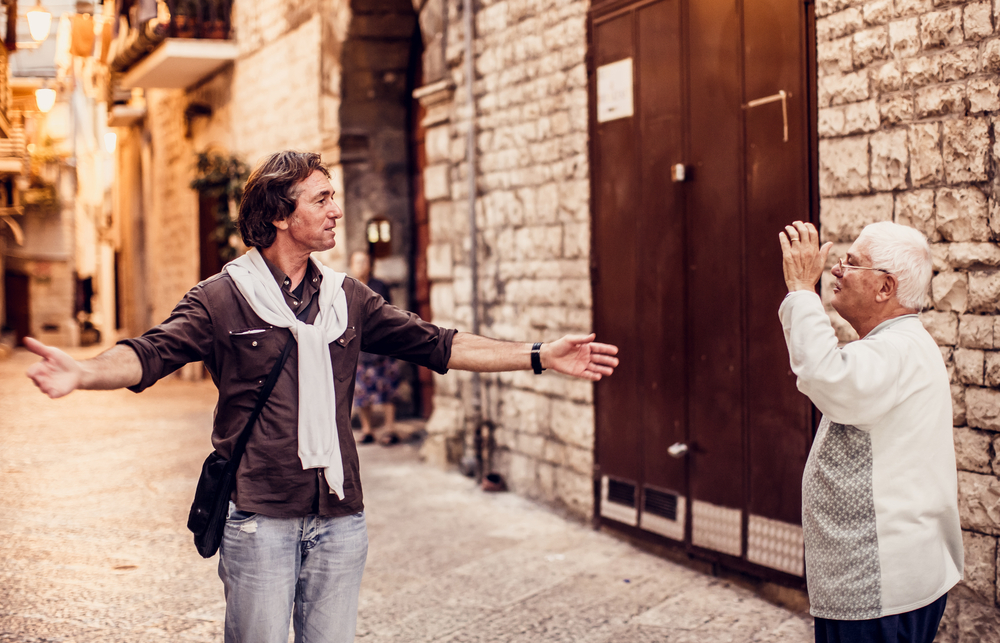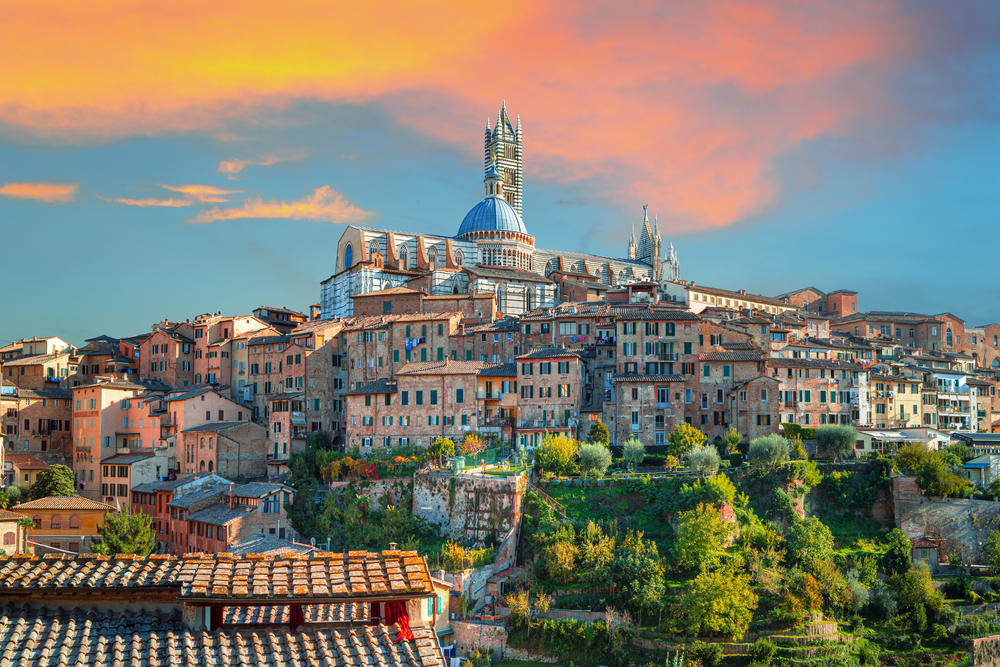08 Jul Culture Club: What to Know Before Traveling to Italy

The food, the people, the landscapes, the culture — Italy’s charms prove many. There’s no place quite like it in the world. No wonder travelers return to this gem of the Mediterranean time and again.
Whether you’ve visited before or are considering your first trip, there are a few things that you should understand about the “Bel Paese” (“Beautiful Country”) and its culture. Here’s what to know before traveling to Italy.
1. Train Travel Is a Fantastic Option
When it comes to the best way to get around Italy, skip the domestic flights. Instead, give train travel a try. The country boasts two operators TrenItalia and Italo, and both operate high-speed trains that crisscross the country. You can buy train tickets at the station from the counter, at a self-service machine, or ahead of time online.
As Elizabeth Fenn, a Mi Familia Internacional customer who, along with her husband and three school-aged children, traveled with us to Italy notes, “In Florence, we grabbed lunch, then bought train tickets online and made our way to the train station. We left at 2:30 or 3 and were back by 6:30 in Florence. It was a quick run out to Pisa but so much fun. We were able to go to the top of the Leaning Tower of Pisa and look around.”

2. The Coperto Fee Is the Real Deal
The first time you see the coperto included on a bill, you may not recognize it. Or, you may assume that it’s a faulty charge. But it’s no scam. What is the coperto? A per-person fee charged in many restaurants across Italy, not unlike a cover charge. It typically costs between one to five Euros. When you see this charge, don’t assume you’re having the wool pulled over your eyes.
The coperto has its origins in the Italian cultural heritage of the Middle Ages when people who stopped at inns often economized by eating food they brought with them from home. As a result, innkeepers started charging customers for the posto coperto (the place they occupied) and the plates and cutlery they used. Today, it remains a fee for the use of tablecloths, cutlery, and pane e grissini (bread and breadsticks). Since tipping is uncommon in Italy (except at luxury hotels, restaurants, and cafes), think of the coperto as an affordable alternative.

3. Paying for Public Restrooms Is the Norm
Entering a public restroom in Italy may surprise you. Even in places like train stations, have one to two Euros on hand to pay for the upkeep of public restrooms. On the bright side, these facilities tend to stay more hygienic and have a ready supply of toilet paper and soap on hand. That’s definitely worth a Euro or two!
Here’s another thing to keep in mind when using Italian restrooms. Most toilets do not have toilet seats. While the story behind why this is the case differs, many Italians claim it’s more hygienic. Since replacing broken toilet seats is out of the norm, be prepared to go seatless.
4. Loud Speech Doesn’t Equate with Anger
Italians have a unique way of expressing themselves. One that involves loud talking, plenty of facial expressions, and sweeping hand gestures. To non-Italians, these lively conversations can look aggressive and angry. It would be a mistake to assume that Italians are mad when they speak passionately, however, since it’s their exuberance for life that drives these communications and interactions.
It’s not outside of the norm to see people screaming at one another and making gestures that look menacing at first. But take a closer look. You’ll usually be surprised to find these conversations end with smiles or outright laughter. While this can appear confusing to travelers, it’s merely a part of daily life in Italy

5. Know Where to Eat to Get the Best Italian Cuisine
Some parts of Italy get inundated by tourists, and restaurants in these areas don’t always offer the highest quality of food because they don’t have to. One rule of thumb to keep in mind? The further you wander from major tourist destinations, the higher your chances of enjoying exquisite cuisine. Nonetheless, travelers still report savoring delectable meals on the Amalfi Coast and in Sorrento.
The takeaway? Do your research when it comes to fantastic local restaurants. This research will help you up the odds of a palate-pleasing experience. What’s the best way to enjoy all that Italy has to offer when it comes to food? A leisurely meal with a local family. In the process, you’ll enjoy plenty of great food and a behind-the-scenes look at Italian family culture. That’s why we make dinner with a local family an integral part of our trips. Explore our Italy Classic and Italy: Tuscany and Beyond itineraries to find out more.
6. Bring a Hearty Appetite
You’ll encounter far more than pasta, lasagna, and ravioli in Italy. So, come prepared to try new things. You’ll also find that Italians have cultivated a slow way of taking meals, passed down for centuries. Like a ritual, this multi-course approach to eating, entertaining, and conversing elevates the dining experience.
What does a typical Italian dinner look like? A traditional meal can last for several hours and contain five (or more) courses. These include the antipasti in the form of bruschetta, cured meats, salads, and more. The primi piatti (first dish), comprised of a starch such as risotto, gnocchi, pasta, etc. The secondi piatti (second dish) or protein segment of the meal, featuring a meat or fish dish. The dolce (sweet) portion of the dinner where authentic gelato, tiramisu, or another delicious treat gets offered to guests.
7. Get Ready for the Ultimate History Lesson
While we’re all familiar with iconic cultural sites in Italy (e.g., the Leaning Tower of Pisa, Florence Cathedral, the Roman Forum, the Colosseum), don’t let your immersion in the nation’s cultural heritage stop there. Almost every city has a castle (or two), a bell tower, and much more. Such structures offer amazing views of cityscapes and the surrounding countryside. They prove well worth the climb.
Italian cities also prove highly walkable. Remember to pack a sturdy, comfortable pair of walking shoes. Since taxis often cost an arm and a leg, you’ll find wandering on foot the more affordable and fascinating approach. As a pedestrian, you’ll have the chance to take in each city’s history, stumbling upon hidden gems and off-the-beaten-path locations. What are some examples of great pedestrian cities? You can see the main sites in Verona on foot in a day, and Florence and Siena’s historical centers are also fantastic walking spots.

What to Know Before Traveling to Italy
What to know before traveling to Italy? From spectacular cities to ancient ruins, soaring mountains to sunny beaches, there’s something for everyone in Italy. Of course, don’t be surprised by a little culture shock in Italy when you first arrive. With the tips above, though, you’ll settle into the local pace of life before you know it. Are you ready to cross this stunning location off your family travel bucket list? If so, we’re here to help. Start planning your Italian adventure! Contact us at info@mifamiliainternacional.com or (615)712-0654

